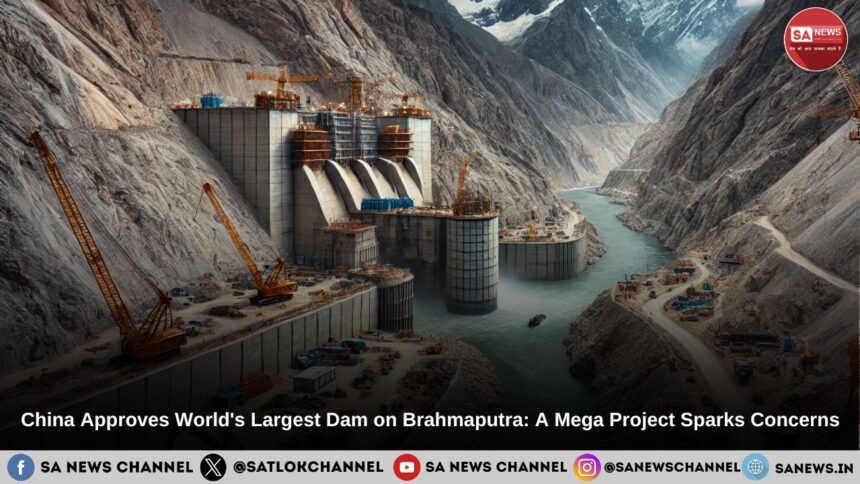Beijing’s new dam project on the Brahmaputra river has drawn international attention due to its unprecedented scale and potential impact on neighboring countries, particularly India and Bangladesh.
Key Highlights: Mega Project on Brahmaputra
- China’s ambitious project on the Yarlung Zangbo River
- Concerns of neighboring countries India and Bangladesh
- The dam may form another complexity in the relationship
- China’s ambition may also turn into geological threat
- A Turning Point in Regional Geopolitics and Sustainable Development
- The Final way to end the global complexity
World’s Largest Dam to Be Built in Tibet
China has given the green light to construct what will be the world’s largest dam on the lower reaches of the Yarlung Zangbo River, known as the Brahmaputra in India. This ambitious project, announced on December 25, aims to surpass all existing infrastructure projects globally, including China’s own Three Gorges Dam, currently the largest in the world.
According to state media reports, the total investment for the project could exceed one trillion yuan (approximately $137 billion). Located close to the Indian border in Tibet, the dam is expected to be a monumental feat of engineering and an economic game-changer for China, but it has sparked unease among neighboring riparian states.
Strategic and Environmental Implications
The scale and location of the project have raised concerns in India and Bangladesh, which are downstream of the Brahmaputra River. The river is a crucial water source for agriculture, drinking water, and energy production in these countries.
India, in particular, is monitoring the development closely. Government sources indicated that while there has been no formal response yet, India is aware of the potential implications. Historically, China has assured India that its projects on the Brahmaputra are run-of-the-river, meaning they do not involve large-scale water storage. However, the sheer size of this proposed dam raises questions about whether this assurance will hold true for the new project.
Bangladesh, which relies heavily on the Brahmaputra for its water supply, is also expected to be significantly affected. Any alteration to the river’s flow could impact millions of people dependent on it for their livelihoods.
A Potential Diplomatic Flashpoint
Experts believe this mega-project could become a contentious issue in regional diplomacy. India and China have already faced tensions over border disputes, and the new dam adds another layer of complexity to their relationship. India has previously raised concerns about China’s dam-building activities upstream, citing potential impacts on water security and ecology.
Economic and Engineering Ambitions
For China, the project represents more than just infrastructure. It showcases Beijing’s ability to undertake and execute massive engineering challenges. The dam will reportedly generate significant hydropower, contributing to China’s renewable energy goals and reducing its reliance on fossil fuels.
However, experts warn that such large-scale projects come with risks, including ecological damage, displacement of local communities, and the potential for seismic activity in the geologically fragile Tibetan Plateau.
The Road Ahead
While China’s approval of the project underscores its economic and technological ambitions, it also highlights the need for greater dialogue and cooperation among nations sharing transboundary rivers. As the dam’s construction progresses, the world will closely watch how China addresses the concerns of its neighbors and the environmental impact of its mega-project.
This development marks a critical juncture in regional geopolitics and the global debate on sustainable infrastructure development.
A Spiritual Solution to Global Unity
The growing tensions and divisions between nations can only be resolved through spirituality. A true spiritual leader, like Saint Rampal Ji Maharaj, possesses the spiritual wisdom and power to break the barriers of borders and foster global harmony. His profound teachings have sparked an ideological and social revolution, promoting peace and brotherhood worldwide. Explore his transformative teachings at www.jagatgururampalji.org









